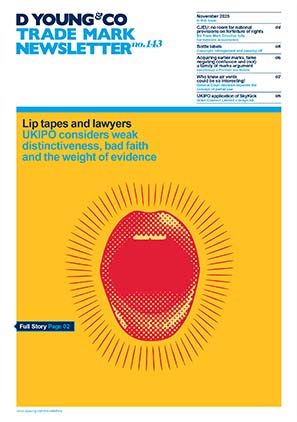Gold for the win – Supreme Court upholds protection for Lindt bunny
On 29 July 2021 the Supreme Court handed down its decision (ZR 139/20), which confirmed that the gold colour of the Lindt gold bunny can enjoy non-registered trademark protection in Germany.
After years of Lindt struggling to protect its chocolate bunny wrapped in gold foil, the Supreme Court has now paved a way for future enforcements against third-party infringements.
Background
Lindt & Sprüngli group produces high-quality chocolates, with one of its products being the Lindt gold bunny. In Germany, Lindt has been wrapping the product in gold foil since 1952 and in the current gold shade since 1994. More than 500 million gold bunnies have been sold in the country over the past 30 years, which makes it Germany’s best-selling chocolate Easter bunny with a market share of over 40% in 2017. A consumer survey submitted by Lindt showed that 70% of those surveyed associated the golden colour with Lindt when used in relation to chocolate bunnies.
However, various trademark offices around the globe have denied protection of Lindt’s 3D trademark for a sitting chocolate bunny in Class 30.
In 2012 the Court of Justice of the European Union even decided that a trademark for the shape and get-up of the gold bunny lacked distinctiveness (Case C-98/11P). As a result, after eight years, Lindt lost its infringement proceedings against Riegelein’s similar gold-coloured Easter bunny (Frankfurt Court of Appeals, 27 October 2011, Case 6 U 10/03).
In 2018 Lindt took action against another manufacturer of chocolate products, which marketed a sitting chocolate bunny wrapped in a gold-coloured foil during Easter 2018. Lindt claimed to own non-registered trademark rights acquired through use for the gold colour of its product.
As background, non-registered trademark rights can be acquired through use in Germany if the sign (in this case an abstract colour mark) has become known as a trademark and thus acquired a secondary meaning among the relevant trade circle.
The first-instance decision was in Lindt’s favour. However in 2020, the Munich court of Appeals overturned the decision and found that Lindt does not own such non-registered trademark rights in Germany for the colour gold in relation to chocolate bunnies (Case 29 U 6389/19). The court stated that Lindt had not established a secondary meaning of the colour itself for chocolate bunnies. Rather, the secondary meaning derived solely from the extraordinary reputation of the specific product.
Lindt appealed to the Supreme Court, which had to decide on the relevant factors to establish secondary meaning in relation to abstract colour marks.
Decision
The Supreme Court confirmed Lindt’s non-registered trademark rights for its gold colour in relation to chocolate bunnies.
While the press release (not the full decision) is available, the finding of secondary meaning appears to be based on the consumer survey showing a 70% degree of association between Lindt and the golden colour used in connection with chocolate bunnies.
Further, the Supreme Court confirmed that secondary meaning does not require the abstract colour mark to be used as a house colour for all or various products offered by a company.
Aside from this, the Supreme Court found that it was irrelevant whether the relevant public still considers the colour an indication of origin for Lindt, even if the gold colour is used for other chocolate bunnies. Rather, this would be a question of likelihood of confusion and trademark infringement.
Last, it is irrelevant that the gold colour is used together with other design elements of the Lindt gold bunny, namely, sitting bunny, red collar with golden bell, painting and inscription ‘Lindt GOLDHASE’, and that these are equally well-known to the public. This does not prevent a secondary meaning of the colour itself as long as the colour is recognised as an indication of origin.
The case has been referred back to the Munich Court of Appeals, which now has to decide whether Lindt’s gold colour trademark was in fact infringed by the third party’s golden bunny.
In any case, while details remain to be seen, the Supreme Court decision is very much welcomed, as it seems to significantly strengthen the position of brand owners trying to enforce rights in unregistered non-traditional trademarks in Germany.
This article was first published on World Trademark Review on 12 August 2021: www.worldtrademarkreview.com.

